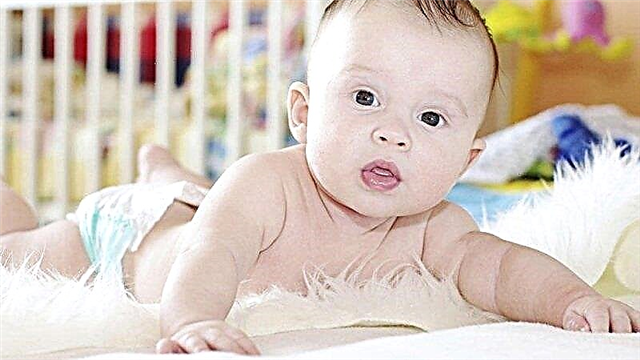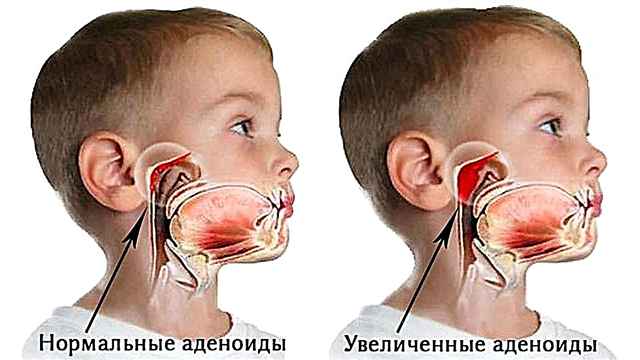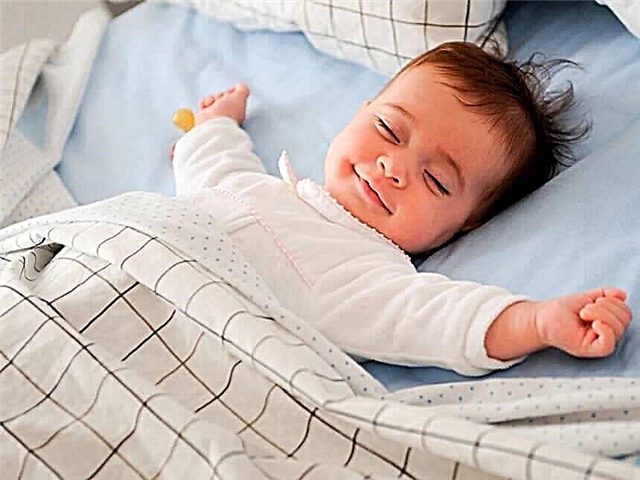Many parents think: when a child starts holding a toy, it is necessary to stimulate the development of this skill, or it is better not to interfere. Of course, basic skills and abilities should develop independently, but it will not be superfluous to help the baby to master them in a timely manner and consolidate them. It is recommended to start paying attention to the development of fine motor skills in the child, including grasping reflexes, as early as possible.

The grasp reflex is an innate reaction common to all babies
Features of the development of the grasping reflex
When the baby acquires the ability to hold objects in his hands, he opens up a fascinating and diverse world of the game. The first manifestation of the grasping reflex is the beginning of the path to mastering such activities as independent eating, writing, drawing, and so on.
The development of the grasping reflex occurs in stages. This reaction is congenital, but it takes time (about a year) to improve. During this period, the baby's movements will become more confident, coordinated, and conscious. The intensive development of the reflex begins at the age of 3 months and then only gains momentum.
So, the formation of reactions goes through several stages:
- From birth to 2 months. Babies are born with a set of innate unconditioned reflexes in their "arsenal". If you press your finger on the palm of a newborn, the baby will immediately close it. Such an action is performed automatically and is not realized by the child. During the first weeks of life, the baby will keep her hands clenched most of the time. However, gradually an interest in the world around him and his own body will wake up in him. As a result, the baby will begin to open and close his palms, thus examining himself, grabbing nearby objects, studying the space.
- At 3 months. The baby is not yet aware of his capabilities and desires, but at the same time, the development of reflexes from this moment begins to occur more intensively. The toddler is already getting used to toys, joyfully revives at the sight of them. 3 months is exactly the age when a child begins to reach for nearby toys. Thanks to this, the eyes are actively developing, hand coordination is improving.
Recommendation. To stimulate positive reactions, it is worth hanging a mobile with rattles over the baby's head: the child will lie and examine them, trying to touch them. Another way to stimulate the skill is to play with the baby: you can lightly cover the baby's face with a diaper, and then remove it. Observing how the mother removes the fabric from his face, the baby will try to pull it on its own.
- From 4 to 8 months. By this time, the child becomes more curious and begins to actively explore the world around him.
Important! During this period, to ensure the safety of the baby, it is necessary to remove dangerous objects from his free access, as well as toys consisting of small parts.
By the age of 8 months, the child, as a rule, already knows how to firmly hold this or that thing in his hands. However, he will still lack dexterity. Between 3 and 12 months, the infant begins to pick up objects to taste later. To avoid trouble, but at the same time allow the baby to develop skills, the baby can be given a spoon to play with.
- From 9 to 12 months. The grasping skill by this time is well fixed, the child's hands become stronger and stronger, the grip, respectively, too. Interestingly, until the age of 2 years, the baby does not feel the difference between the right and left hand.
- After a year. In the future, a one-year-old child discovers a new interesting activity - throwing toys. During this period, the baby really likes to throw objects and wait for the mother to pick them up and give them to him so that he can throw them again. This behavior is the norm, which is why parents need maximum patience. Starting from 2 years old, kids turn into real artists, which is the first thing that wallpaper suffers from. At this time, children show great interest in the corresponding attributes: paints, pencils, crayons, and so on. At the age of three, motor coordination reaches a sufficiently high level of development for the child to put his signature on paper (even if it is uneven and ugly).
If the baby does not show any interest in objects that are nearby (does not look, does not try to grab), then it is worth consulting with a specialist. Also, a reason to see a doctor is the child's inability to grab and hold objects at the age of 9 months.
On a note. In children born earlier than the due date, the stages of development of grasping functions occur with some delay, as a result of which the terms named above are shifted to a later time.

Baby playing
When a child is holding a toy
Some people mistakenly believe that babies are able to hold objects, including toys, from the first day of life, since they have an unconditioned grasping reflex. However, in fact, the child can hold the thing tightly, moreover, the child can do it consciously after 4 months. Upon reaching 6 months, children can take objects from any position, and also hold them simultaneously in both hands separately.
After six months, babies are able to play with a rattle for a long time. As a result, the baby forms a set of favorite toys in his mind. This feature can be used to train motor skills: pull the thing in the child's hands towards yourself so that the muscles of the baby are slightly tense. It is also recommended to train the ability to transfer toys from one hand to another.
The role of toys in personality development
The toy accompanies the child almost from the very birth, having a significant impact on the physical and mental development of the baby, namely, it contributes to the formation and improvement of:
- Memory;
- Attention;
- Imagination;
- Motor skills;
- Agility;
- Coordination;
- Vision;
- Perception of sounds;
- Social skills.
Thanks to these subjects, the baby gets acquainted with such concepts as color, quantity, shape, size. In the process of regular play activity, the child's brain accumulates changes in the psyche, which subsequently have a significant impact on the formation of the personality.
On a note. The toy is the first child's teacher, created by adults to prepare him for entering social relationships and gradually entering the adult world.
Rattles are the very first toys for a baby. With their help, parents establish an emotional connection with the baby, carry out communication (accompanying the game with gentle words, a smile, singing). The bright appearance of the rattle, the sound it makes, attract and hold the child's attention. In the future, the subject becomes interesting to the baby from the point of view of manipulation: by the age of six months, the baby begins to actively grab it, due to which reaction, coordination, and visual attention develop. The kid starts swinging the rattle, throwing it, picking it up, shaking it. Gradually, the child develops an understanding of cause-and-effect relationships: a one-year-old baby realizes that the actions he performs with the rattle entail certain consequences (for example, if the object is shaken, it will make a sound).
Thanks to contact with musical toys (drums, bells, rattles, baby peas), the child develops a musical taste and a sense of rhythm.
Playing with didactic toys (collapsible structures), a one-year-old baby improves motor skills, learns to show independence, begins to realize the results of his own efforts, and learns sensory standards. In addition, the bright appearance of objects, a variety of shades and shapes, their harmonious combinations develop aesthetic taste in the child.
In preschool age, a variety of games are used, for example, construction, directing, plot-role and others. Such activities develop the child's imagination, form social skills, and introduce them to certain professions.
On a note. It is important to choose the right toys for your child. This is done taking into account the age, characteristics of physical and mental development, the need for any activity, the interests of the baby.

Mobile with rattles
How to teach a child to hold a toy
To stimulate the development of grasping skills in the infant, it is recommended to develop fingers through massage and regular exercise.
In order for the training to be as productive as possible, it is recommended to conduct it in a favorable environment: it is important that the child is in a good mood, during classes it is advisable to talk with the baby and smile at him. At first, not everything will work out, but you don't need to get upset. Repeated repetition of the same actions will reinforce the skill.
Here are some helpful tips on how to stimulate the development of the necessary skills:
- When the baby is trying to connect the arms over the breast, you need to help him do this: bring the arms together so that the child feels the touch of his fingers. Hand grip can be trained while feeding (try to make sure that the little one wraps their hands around the bottle). It is very convenient to train the skill when the baby sits on the lap of an adult. At this moment, the baby's hands are spread and brought together, connecting the fingers.
- An effective way to exercise is to put objects in your child's hand. To do this, take a rattle (a great option - in the form of a ring) and attract the attention of the crumbs to it (drive in front of the eyes, shake, making a sound). Then they go directly to the hands: it is necessary to unclench the baby's fist and gently stretch his fingers. Then re-draw the child's attention to the object, and the baby itself will reach for it. When this happens, the toy should be placed in the children's palm so that the baby can grab the ring with four fingers (the big one should be placed on top). The skill will be consolidated through multiple repetitions.
- Grabbing objects. At first, the child takes and holds any things indiscriminately (does not separate objects depending on their purpose and properties). By the age of 6 months, the baby's actions become more meaningful, interested: the child begins to highlight one object from several and tries to reach only him. By training this skill, parents help the baby to form and establish important neural connections between the visual and motor centers. When the skill is consolidated, the crumb begins to grab everything that comes to his hand, regardless of whether he is lying on his stomach or back, sitting or crawling. During this period, care must be taken to ensure that the surrounding objects are completely safe for the child, differ in shape, size, color.

Development of the grasping reflex in a newborn
What toys are good for a child
In the first months of life, the rattle is the most relevant type of toy. There are many different rattles that are suitable for both boys and girls:
- Suspensions (located above the bed or stroller);
- Bracelets and socks (made of fabric, fixed with Velcro on the baby's arms and legs, respectively). Develop motor skills;
- Rings (there may be other shapes - square, triangle, etc.). Designed for grasping and holding;
- Teethers (used during the teething period);
- Rustlers (made of fabric, have special fillers that emit a “rustling” sound);
- Slingo toys (tied to a sling and "entertain" the child while walking).
Interesting. Any rattle can be made from one material or several. As such, plastic, silicone, fabric are used.
The most important type of toys for preschool kids is the doll. It is not only a subject participating in children's games, but also a constant communication partner, faithful companion and friend. Thanks to his imagination, the child endows the doll with character, feelings, thoughts, mood, depending on which she performs certain actions. In the process of "communication" with the doll, the baby learns to take care of the "friend", educates him, transfers his knowledge. In fact, all actions that a child performs with a toy are nothing more than a reflection of the actions of his parents in relation to him. While playing with the doll, the baby reproduces various forms of behavior and evaluates them.
Also of great importance for the development of the child are toys-tools (these include shovels, buckets, etc.), technical toys (cars, airplanes), sports and motor toys, homemade products and others.

Teething rattle
The grasping skill is the most important function, the development of which affects the formation of the child's physical and mental characteristics. Knowing how many months a newborn baby should hold a toy will help parents to start training the necessary abilities and skills in a timely manner.



